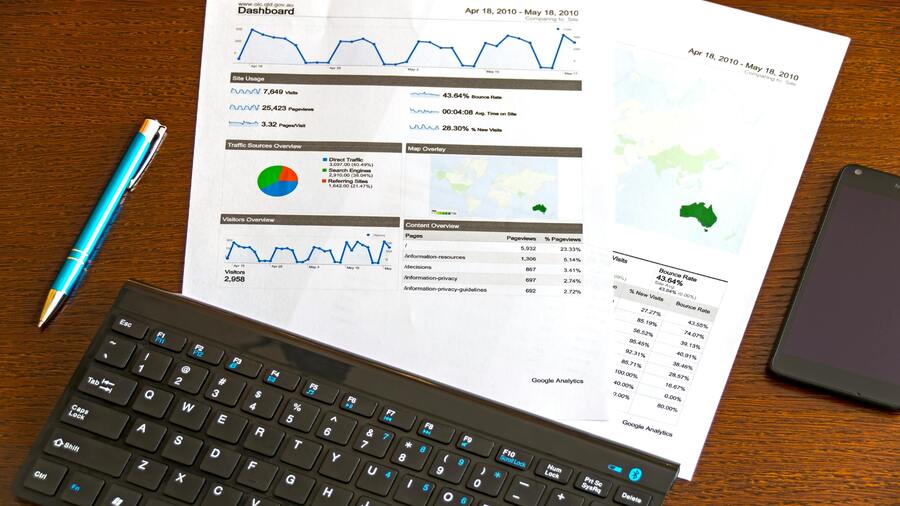Gaining expertise in customer acquisition cost (CAC) and a profound understanding of CRM in business operations extend beyond financial metrics; it’s the compass guiding businesses through the intricate terrain of B2B marketing. In this digital age, where every click, impression, and conversion carries a measurable cost, dissecting and optimizing customer acquisition strategies becomes the linchpin for strategic success. This blog unravels the layers of importance embedded in customer acquisition marketing, transcending its role as a mere financial indicator. Join us in deciphering the nuances of customer acquisition costs as we unravel strategies and insights that not only reduce costs but also pave the way for long-term success and customer retention.
Importance of Customer Acquisition Cost
Acquisition cost is essential for overall business health and growth, emphasizing the integration of a framework for ideal customer profile (ICP) development for strategic decision-making. Accurate customer acquisition calculation ensures efficient ROI assessment on customer touchpoints and channels, promoting a sustainable balance between acquisition costs and lifetime value. This insight guides strategic marketing decisions, optimizing budget allocation for channels with the lowest CAC. Efficient customer acquisition management, coupled with a robust framework for ideal customer profile development, extends beyond cost reduction, enhancing the on-boarding experience, fostering loyalty, and increasing customer lifetime value through strategic customer retention strategies. Additionally, understanding customer acquisition costs strategically positions businesses in the market, influencing growth strategies tailored to market dynamics and consumer behavior shifts. That further solidifies the strategic foundation for successful customer acquisition and long-term business sustainability.
Influence of Customer Lifetime Value (LTV) on Customer Acquisition Cost
The fundamental principle guiding B2B marketers is a need to maintain balance, where LTV significantly surpasses CAC for sustained profitability. Businesses can foster satisfaction and loyalty by prioritizing cost-effective customer onboarding and efficient acquisition methods, ultimately increasing LTV. This investment ensures sustained revenue from existing customer acquisition channels and creates a foundation for greater lifetime value.
A healthy LTV, measured through robust customer satisfaction metrics, allows businesses to allocate more resources toward customer acquisition. With a higher LTV, companies can afford more substantial spending on acquiring new customers, knowing the long-term return on investment is guaranteed. This flexibility empowers businesses to adopt an aggressive brand to demand approach that drives growth and ensuring a competitive edge.
Furthermore, understanding LTV is instrumental in adapting to market trends and changes in consumer behavior. By staying attuned to shifts in customer expectations, businesses can proactively adjust their customer acquisition strategy, ensuring alignment with evolving market dynamics. This adaptability becomes crucial for maintaining a harmonious relationship between LTV and customer acquisition management, especially in dynamic and competitive business environments. The interplay between LTV and CAC is a strategic cornerstone guiding businesses toward long-term success and sustained profitability.
Strategies to Reduce Customer Acquisition Cost
Optimizing customer acquisition costs (CAC) are crucial for maximizing profitability. Here are four detailed strategies that can help businesses lower their CAC.
Laser-Focused Marketing
Divide your target market into specific groups based on age, gender, and interests. This enables the creation of more personalized and relevant marketing messages, significantly boosting inbound lead generation.
Develop marketing messages that resonate with each segment. Tailor your content to the specific interests and preferences of each group.
Select the most effective marketing channels based on where your target audience spends most of their time. Continuously monitor and adjust campaigns based on performance metrics.
Optimizing SEO for Higher Organic Reach
Identify and use the right keywords that potential customers are searching for, and enhance your customer acquisition strategy. Optimize your website and content around these terms to increase search engine rankings. Investing in SEO can reduce the customer acquisition cost over time.
Create high-quality and relevant content that engages readers and signals to search engines that your website is a valuable source of information.
Regularly review and update your SEO strategies to adapt to new search engine algorithms and shifts in consumer search behaviors.
Enhancing Customer Experience
Create a user-friendly and intuitive onboarding process. Offer step-by-step tutorials and a simplified setup of the customer acquisition process to make it easier for new users to get started.
Offer exceptional customer experience through multiple customer acquisition channels. This leads to quicker resolution of customer issues, higher customer satisfaction metrics, and positive word-of-mouth marketing.
Tailor your product to individual user preferences and behaviors. This improves engagement satisfaction and contributes significantly to customer retention strategies, ultimately boosting both retention and referrals.
Efficient Use of Analytics
Keep track of the cost per acquisition (CPA) across various campaigns to understand the cost-effectiveness of different customer acquisition processes.
Conduct A/B testing to compare different marketing approaches and choose the most effective one.
Conclusion
In conclusion, mastering the intricacies of customer acquisition costs (CAC) in B2B marketing are paramount for businesses striving for sustained profitability and growth. The delicate balance between CAC and customer lifetime value (LTV) has been underscored, illustrating how a harmonious relationship, supported by robust customer retention strategies, propels businesses toward long-term success. The blog, enriched with insights from leading B2B tech publications, has explored the multifaceted roles of customer acquisition strategy in decision-making, emphasizing its significance as a financial health indicator and a critical factor in assessing return on investment.
Gain compelling B2B marketing insights, trends, and strategies for building an efficient customer acquisition strategy. Reach out and chart your path to B2B success with effective lead generation.




